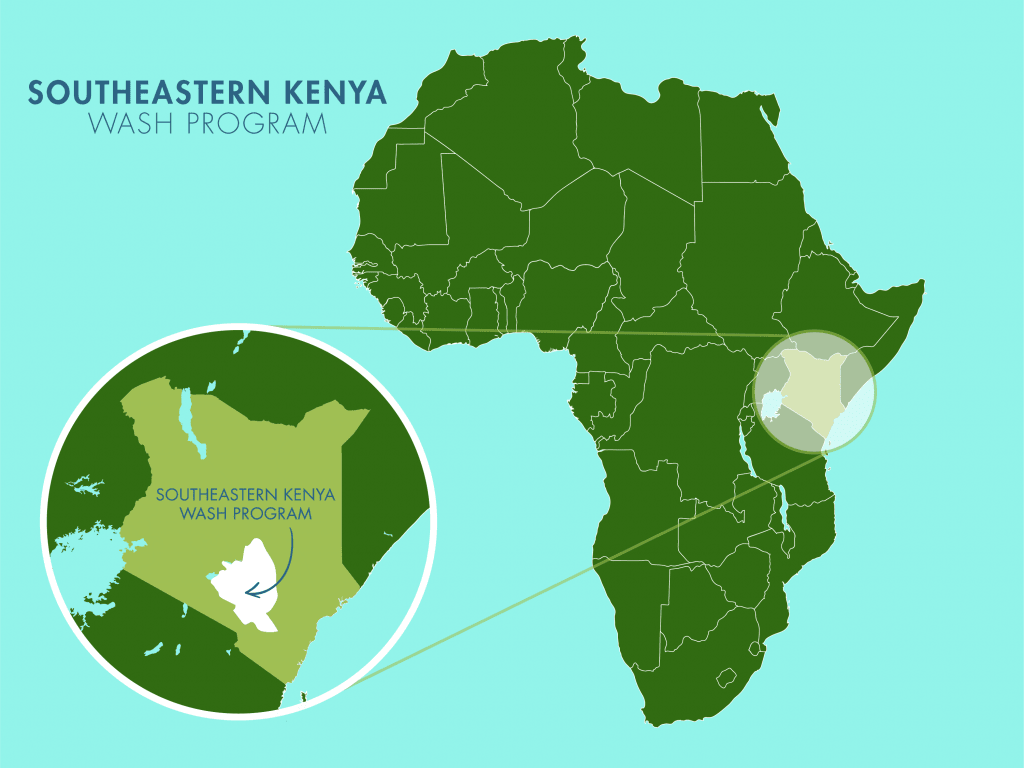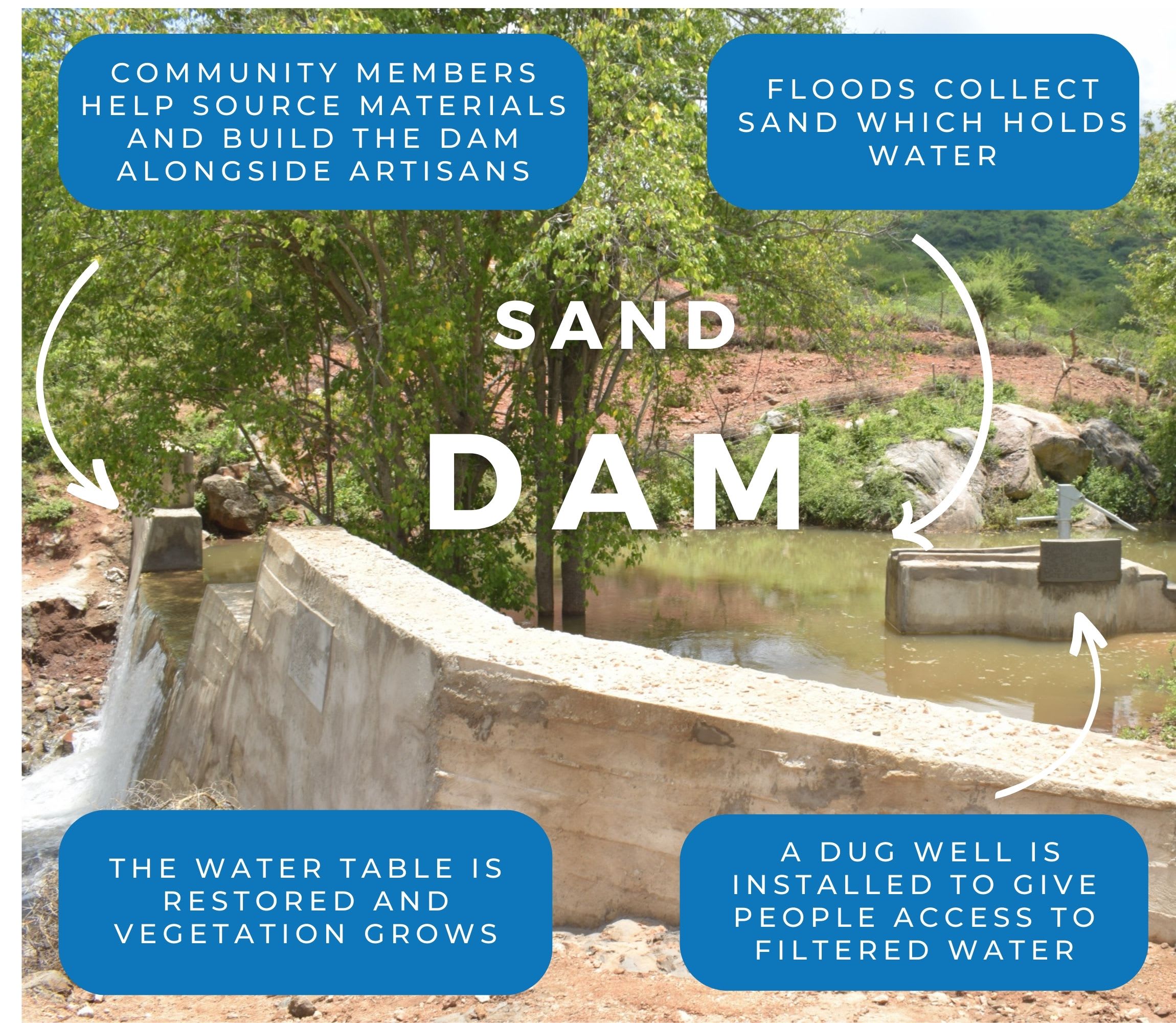500 people call the community of Kithusye home — but without a reliable, nearby source of clean water, daily life is a constant struggle. The only options are a protected well located an hour’s walk away or digging holes into the dry riverbed, where collecting enough water can take up to two hours.
The extraordinary amount of time consumed collecting water means people must ration water.
"Most residents who live far away from the current sources can make only a single trip; hence, water has to be used sparingly at home, leading to poor hygiene and a lack of water for irrigation. School-going children spend their evenings, holidays, and weekends fetching water, causing exhaustion and a lack of energy to focus on studies, ultimately causing poor grades," shared Field Officer Alex Koech.

Collecting water and carrying it home is a physically demanding task.
But that is not the only issue community members must confront. The water they collect often puts them at risk of contracting water-related illnesses that negatively impact their health.
"The protected shallow well that was set up earlier this year serves a small portion of the community. Thanks to the scattered pattern of population, some members who reside far away depend on the seasonal and contaminated scoop holes, which offer saline water but expose them to gastrointestinal problems, including vomiting, nausea, diarrhea, and stomachaches. Treating these infections is costly because, being mostly farmers, residents reap very little from their drought-stricken farms or livestock. It also forces them and their children to forego crucial activities like working on their farms, studying, or herding livestock," Alex continued.
Alex noted that his conversation with Faith, a 13-year-old responsible for collecting water daily for her family, had an impact on him.
"One of the most impactful moments during my interactions with the water users was speaking with a young girl named Faith, who aspires to become a doctor. Her quiet strength and determination despite the daily burden of fetching water left a lasting impression on me. She shared how she often arrives at school late and too exhausted to focus because of the long distances she must walk to collect water—water that she knows is unsafe but must drink anyway. Listening to her describe how these challenges affect her health, education, and dreams was both heartbreaking and inspiring," said Alex.

Faith.
Faith shared her thoughts.
"Fetching water takes several hours for me because the scoop hole is located several kilometers away from our home, [and] the steep terrain also makes fetching water a difficult ordeal. I feel very tired and sometimes scared, especially when I have to go far or carry heavy jerrycans. It makes me sad because I wish I could spend that time reading or playing with my friends. But I know it’s a responsibility, and I just hope one day we will have clean, nearby water so life can be easier," lamented Faith.
Faith spends much of her free time collecting water, when she would love to use her time enjoying being a child and preparing for her future instead. However, without a nearby water source, she is stuck in this overwhelming cycle.

Faith collects water.
"On weekends and evenings, I use most of my time fetching water instead of revising or resting. It makes me too tired to concentrate, and that affects how well I do in class and in exams," Faith noted.
Faith knows that if water could come closer to her home, she could focus on building a brighter future.
"A new waterpoint will help keep me and my family healthy. We won’t have to worry about getting sick from drinking dirty water. It will also be closer to home, so I won’t have to walk long distances through unsafe paths or rush through dangerous areas when it’s getting dark. I would spend my time revising my classwork, playing with my friends, or helping my mother with small chores at home," said Faith.
Solving the water crisis in this community will require a multifaceted system that will work together to create a sustainable water source that will serve this community for years to come.
Steps Toward a Solution
Our technical experts worked with the local community to identify the most effective solution to their water crisis. Together, they decided to construct a sand dam and a protected dug well.
Sand Dam
Sand dams are sought-after, climate-smart, and lasting water solutions providing hope and resilience to communities in arid Southeastern Kenya. Think of them like giant sandboxes constructed in seasonal rivers that would typically quickly dry up after the rainy season. Instead of holding water like traditional dams, they collect sand and silt.
When infrequent rains do come, these dams catch a percentage of the river's flow, letting most of the water continue downstream to other communities. But here's the magic: the sand they collect acts like a natural filter, holding onto water long after the river's gone dry. Then, wells are constructed nearby, creating a reliable water source even during the driest times.
And the benefits don't stop there! In communities impacted by climate change, sand dams replenish groundwater and prevent soil erosion. Even during severe droughts, the consistent water supply from these sand dams allows farmers to thrive, giving way for enough food not only for their families but also to sell in local markets.
The most remarkable aspect of sand dams is how they involve the local community every step of the way, giving them a sense of ownership and pride in solving their own water shortage and managing their own water resources.
This sand dam will be connected to a protected dug well to make the water more accessible.
Community Education & Ownership
Hygiene and sanitation training are integral to our water projects. Training is tailored to each community's specific needs and includes key topics such as proper water handling, improved hygiene practices, disease transmission prevention, and care of the new water point. Safe water and improved hygiene habits foster a healthier future for everyone in the community.
Encouraged and supported by our team's guidance, the community elects a water user committee representative of its diverse members. This committee assumes responsibility for maintaining the water point, organizing community efforts, and gathering fees to ensure its upkeep.

 Sand Dam
Sand Dam
 Rehabilitation Project
Rehabilitation Project
















